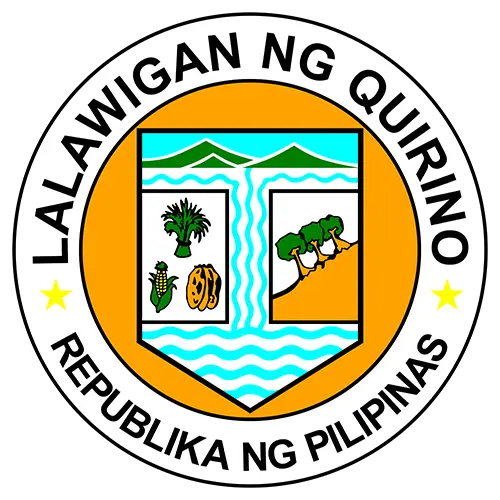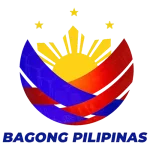GEOGRAPHICAL LOCATION
PHYSICAL FEATURES
Bountifully endowed with vast natural resources and development potentials, from its rich soil, widespread forests and grasslands, exquisitely carved mountain gorges, undiscovered pristine caves, renowned rivers and waterfalls, and teeming with a highly creative and skilled workforce, the Province of Quirino is positioned to become the “Prime Agro-Industrial Hub and Eco-tourism Destination of the North.”.
Quirino is geographically characterized as a landlocked and mountainous province. It is located at the southeastern portion of Region 2, bounded by the province of Isabela in the north, the province of Aurora in the east and the province of Nueva Vizcaya in the south and west. The Sierra Madre Mountain range provides a natural barrier on the eastern and southeastern border, while the Mamparang range shields the western part of the province. The province’s center is approximately 49.5 km from Santiago City, 163.4 km from Tuguegarao City, and 376.5 km from Manila.
LAND AREA / DEMOGRAPHY
Land Area:
Number of Municipalities:
Number of Barangays:
Number of Congressional Districts:
Capital Town:
Population (2020 Cencus):
Total number of Households (2020 Cencus):
Labor Force:
Employment Rate:
305,718
6
132
1
Cabarroguis
203,828
49,546
119,000
91.5%
CLIMATE
The climate of Quirino is tropical, according to the Köppen-Geiger climate classification system (www.climate-data.org). It receives a significant amount of rainfall throughout the year, even during the driest months. Having a tropical climate, it experiences a longer wet season and is affected by monsoon winds, locally known as “hanging habagat” (southwest monsoon) and “hanging amihan”(northeast monsoon). The hanging habagat brings rains to the province from June to October. The highest amount of rainfall is experienced during the months of July and August. The annual average rainfall within the province ranges from less than 1,500 mm to over 2,100 mm (PDPFP 2011-2030).
LANGUAGES / DIALECTS
Adasen
Agta
Ayangan
Bago
Balatok
Bikol / Bicol
Bisaya / Binisaya
Bontok
Bukalot / Ilongot
Chinese
Dibaben
Gubatnon
Hanunuo
Henanga
Higaonon
Hiligaynon Ilonggo
Ibaloi / Ibaloy
Ibanag
Ifugao
Ilianen
Ilocano
Iranon / Iranun / Iraynon
Isinai
Isoroken
Itawis
Itneg / Tingguian
Kalanguya
Kalinga
Kankanaey
Maranao
Obu-Manuvu / Ubo-Manobo
Palawani
Panay-Bukidnon
Pangasinan / Panggalato
Tagalog
Tagbanua / Calamian
Tausug
Tuwali
Waray
Yapayaoa
Yogad
SOCIO-ECONOMIC PROFILE
I.
Poverty Incidence
The poverty incidence in Quirino has demonstrated a significant decline in recent years. From 9.9% in 2018, it increased to 11.3% in 2021 before dropping to 6.5% in the first semester of 2023 (Philippine Information Agency [PIA], 2023). This rate is considerably lower than the 2023 national poverty incidence of 10.9% and Region 2 of 10.3% among population reflects the effectiveness of provincial development programs such as the Quirino Integrated Rural Development Project (QIRDP), which has been instrumental in poverty reduction (PIA, 2023). The “I LOVE QUIRINO” Flagship Program continues to play a crucial role in promoting inclusive growth by supporting livelihood initiatives, sustainable agriculture, eco-tourism, infrastructure expansion, environmental protection, and improvements in education and healthcare services.
II.
Inflation Rate
Quirino’s inflation rate has shown a significant downward trend over the past year. After peaking at 10% in November 2022, the rate declined to 7.7% in February 2023. This downward trajectory continued, with the inflation rate reaching 1.6% in September 2024 and further decreasing to 1.5% by December 2024. These figures are notably lower than the national average, which stood at 3.2% for the year 2024 (PSA, January 16, 2025). This trend reflects effective local economic stabilization efforts and the success of provincial initiatives aimed at controlling prices and ensuring market stability.
III.
As of October 2024, Quirino province recorded a 97.1% employment rate, reflecting a strong labor market recovery. This growth is driven by the expansion of jobs in agriculture, tourism, and small-scale industries, supported by government initiatives in job creation, skills training, and enterprise development. Employment in agribusiness, eco-tourism, and MSMEs has increased due to investments in high-value crops, heritage tourism, and local industries. To sustain this momentum, the province continues to prioritize workforce training in agribusiness, tourism, and digital industries, equipping workers with relevant skills through technical-vocational programs and industry partnerships.
With a proactive approach to labor market development, Quirino remains committed to inclusive employment growth and reducing underemployment, ensuring long-term economic resilience (PSA, Feb 13, 2025).
IV.
Economic Sector
a. Agriculture
Remains the backbone of Quirino’s economy, employing a significant portion of its workforce. The Provincial Government prioritizes agricultural productivity and diversification through initiatives like the Quirino Livelihood for Everyone (QLiFE) program.
The Quirino Integrated Rural Development Project (QIRDP) Phase II was completed in 2023 to enhance agroforestry sustainability, strengthen cattle production, and establish value chains for agricultural products. The QLiFE Processing Center now serves as a hub for marketing and value-added production, boosting farmers’ incomes and agricultural output.
A third phase of the program assisted by KOICA is underway and it will focus on the Saemul Undong Plus approach on addressing poverty in the rural barangays of Quirino.
b. Tourism
Quirino province welcomed 235,905 tourist arrivals and 16,357 same-day visitors in 2023 marking a significant post pandemic rebound in its tourism sector. From that Quirino’s tourism sector saw a 16.2% increase in visitors in 2024, with excursionists rising by 16.0% and tourist arrivals increasing by 25.4% (PTO, 2024). This growth was fueled by major events such as Quirino Motorismo, Panagdadapun Festival, Paskuhan sa Quirino, and wakeboarding competitions, reinforcing the province’s reputation as an adventure destination.
The Provincewide Broadband Project improved digital connectivity, enhancing accessibility for both domestic and international tourists. Cultural initiatives, including heritage tours, cultural mapping, and the SILNAG and TAN-OQ Awards, further promoted Quirino’s rich heritage. Participation in Ambiente Frankfurt also bolstered the province’s global
presence in the creative industry.
Tourism enterprises reached 543 in 2024, with a 13.7% rise in secondary enterprises, largely due to agri-tourism expansion. However, primary tourism enterprises declined by 6.9%, primarily due to a reduction in Bugadors (eco-guides). The OTOP Hub Quirino saw a 53.8% increase in sales, supporting MSMEs and community enterprises. The province remains committed to sustainable tourism, ensuring environmental compliance while fostering inclusive economic growth through strong partnerships with national agencies, LGUs, and private stakeholders.
c. Industry
Quirino is fostering economic diversification through initiatives such as the One Town, One Product (OTOP) program, the Quirino Integrated Rural Development Project (QIRDP) Value Chain Development, and the Quirino Livelihood for Everyone (QLiFE) program. Micro, Small, and Medium Enterprises (MSMEs) receive support through local investments, incentives, and infrastructure enhancements, positioning the province as a potential hub for agro-industrial development. Notably, the province has secured funding from the Department of Agriculture-Philippine Rural Development Project (DA-PRDP) and the World Bank, leading to the establishment of the Quirino Livelihood for Everyone (QLiFE) Processing Center. This state-of-the-art facility addresses issues of wastage due to overproduction and ensures the complete value chain formation of agricultural products in the province providing effective and efficient farmer support from production, processing, and marketing (DTI, 2024 May 22).
Quirino’s economic landscape predominantly revolves around its agriculture sector, serving as the primary source of livelihood for its residents. The Q-LiFE program, which has gradually positioned the province as a potential industrial hub through increased participation in value-adding activities, will be further strengthened.
V.
Health
The province remains steadfast in its commitment to Universal Health Care (UHC) by ensuring equitable access to quality healthcare services. PhilHealth accreditation of all provincial hospitals guarantees financial risk protection for patients. Health facility enhancements, including modernized medical equipment and expanded hospital infrastructure, improve service delivery across the province. The Preventive Health Services Caravan continues to provide free consultations, vaccinations, and wellness programs, particularly in rural and underserved communities.
To further alleviate the financial burden of healthcare, the province has strengthened its Medical Assistance Program, covering hospitalization, diagnostic procedures, and medication subsidies for indigent families. Additionally, residential care facilities offer specialized services for vulnerable groups, including senior citizens and persons with disabilities.
VI.
Education
As of 2024, Quirino boasts a 98.3% literacy rate, a testament to its strong education initiatives. The province actively supports learning through the Special Education Fund, Teachers’ Development Program, and scholarship assistance for students. The Kwento, Kwenta ng Bawat Bata (KKBB) program enhances literacy and numeracy skills among young learners, complementing the Department of Education’s broader
initiatives.
To keep up with technological advancements, the province has embraced digital learning initiatives such as the Teacher in the Cloud Project, utilizing Google Classroom and other e-learning platforms. These efforts ensure that students receive quality education, even in remote areas.
Enrollment rates continue to rise, with primary education reaching 97.8% and secondary education at 95.2% in 2024. The province also prioritizes Technical-Vocational Education and Training (TVET) programs, equipping learners with employable skills in agriculture, tourism, and digital industries.
VII.
Social Welfare
The Provincial Social Welfare and Development Office (PSWDO) implements a wide range of programs to support vulnerable sectors, including women, children, senior citizens, and persons with disabilities (PWDs).
The Child Development Centers provide early childhood education and supplemental feeding for malnourished preschoolers. Educational assistance programs support underprivileged college students, while livelihood initiatives help economically disadvantaged families achieve financial stability.
The province actively implements the Pantawid Pamilyang Pilipino Program (4Ps), ensuring cash grants for low-income households to support children’s education and healthcare. Additionally, Quirino has institutionalized child protection efforts through its Local Code for Children and Local Development Plan/Investment Plan for Children, reinforcing policies that safeguard children’s rights and welfare.
VIII.
Housing
In partnership with the National Housing Authority (NHA), the provincial government is advancing housing projects that provide safe, sustainable, and culturally sensitive homes for indigenous communities, particularly the Bugkalots in San Pugo and the Agtas in Disimungal, Nagtipunan. These projects integrate eco-friendly designs that respect indigenous traditions while improving living conditions.
The province also supports socialized housing programs, ensuring access to affordable
homeownership opportunities. Infrastructure improvements, including water supply, sanitation, and electrification, complement these housing projects, fostering inclusive and resilient communities.
IX.
Environment
Quirino, situated along the Sierra Madre Biodiversity Corridor and the headwaters of the Cagayan River, actively pursues watershed rehabilitation, reforestation, and environmental conservation. The PNREO spearheads solid waste management programs and supports municipal waste management initiatives. The QIRDP Phase II integrates agroforestry models, cattle production, and agricultural value chains, reinforcing rural development and poverty reduction. Also, the PNREO plays a vital role in promoting environmental conservation and proper resource management, focusing on forest and grazing lands, mineral resources, and reservation and watershed areas. It ensures equitable benefits for present and future generations.
X.
Infrastructure
a. Roads and Bridges
Quirino’s road network spans 436.026 kilometers, maintained through various funding mechanisms, including the Philippine Rural Development Project (PRDP), Conditional Matching Grant to Provinces (CMGP) and the province’s 20% Development Fund. Plans for road enhancements include expanding provincial roads leading to key areas, facilitated by projects like the Tourism Road Infrastructure Prioritization Project (TRIPP). Additionally, the Department of Agriculture’s PRDP and the Local Government Support Fund – Support to the Barangay Development Program (LGSF-SBDP) contribute to infrastructure development. The Provincial and Municipal Engineering Offices oversee repair and maintenance of local roads, ensuring accessibility to essential services like education and healthcare. Road improvements support tourism, agriculture, and economic activities.
b. Water System
Water system projects have expanded potable water access, including supply to the Quirino Province Medical Center and the Capitol Complex. Future phases will further enhance water distribution infrastructure across the province.
c. Digital Infrastructure
The Province aiming to boost connectivity pursued its own digital infrastructure project. Through the DICT’s Free Wi-Fi program, internet access has expanded in schools, hospitals, and transport hubs. Partnerships with private providers like Globe, Smart, and PLDT Fiber Optic enhance connectivity and digital inclusivity. This will not only support better learning but it will also directly improve various commercial activities. Further, these efforts augment our physical infrastructure, driving overall development and ensuring no one is left behind in the transition to a digital economy.
d. Power Supply
As of 2021, Quirino has achieved 100% barangay electrification, covering all 132 barangays and 56,242 household connections. QUIRELCO continues to enhance energy access and efficiency. The province is also actively looking ahead to alternative and more sustainable energy sources to support the province growing requirements and the need to balance development and sustainability.


